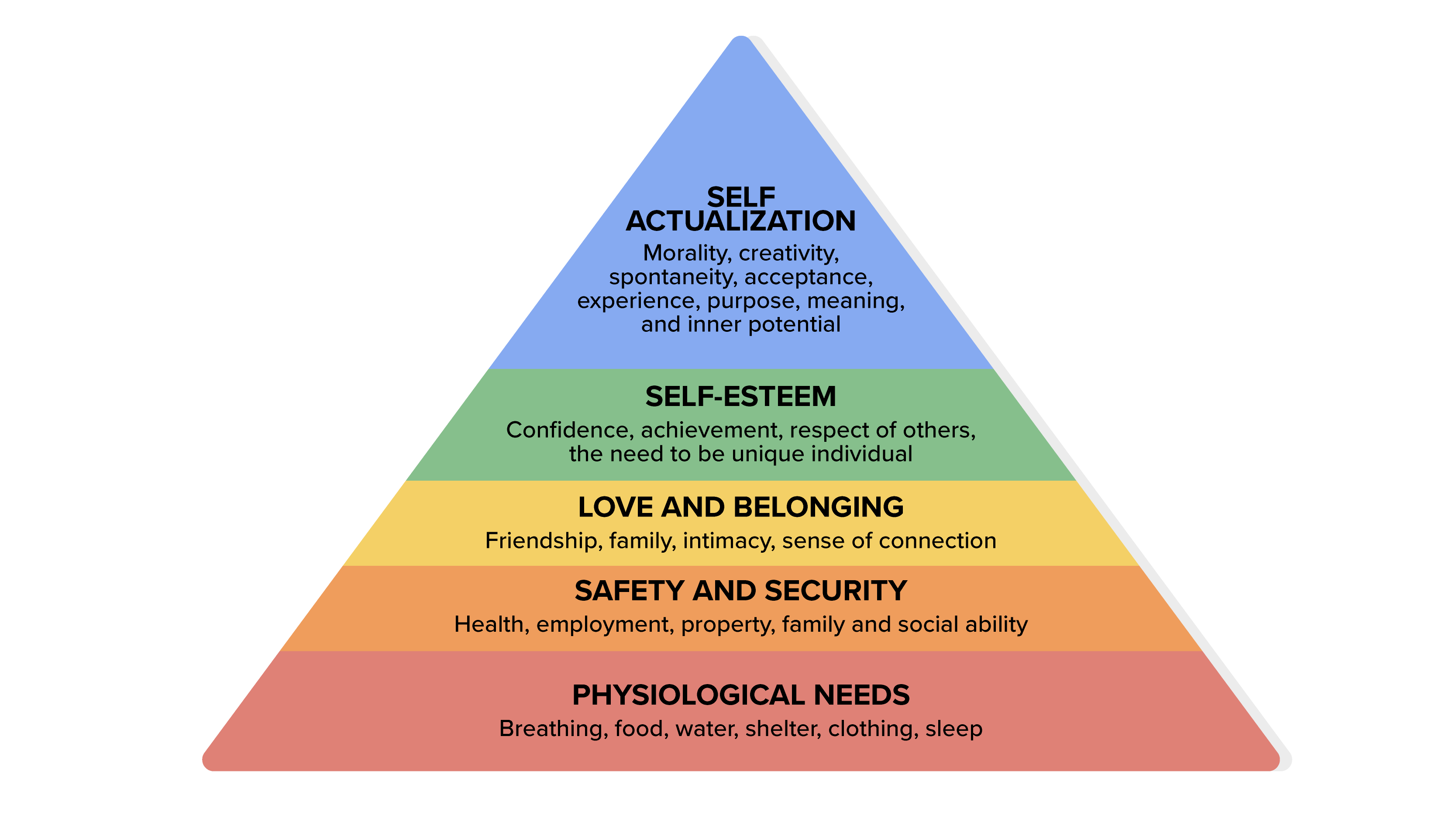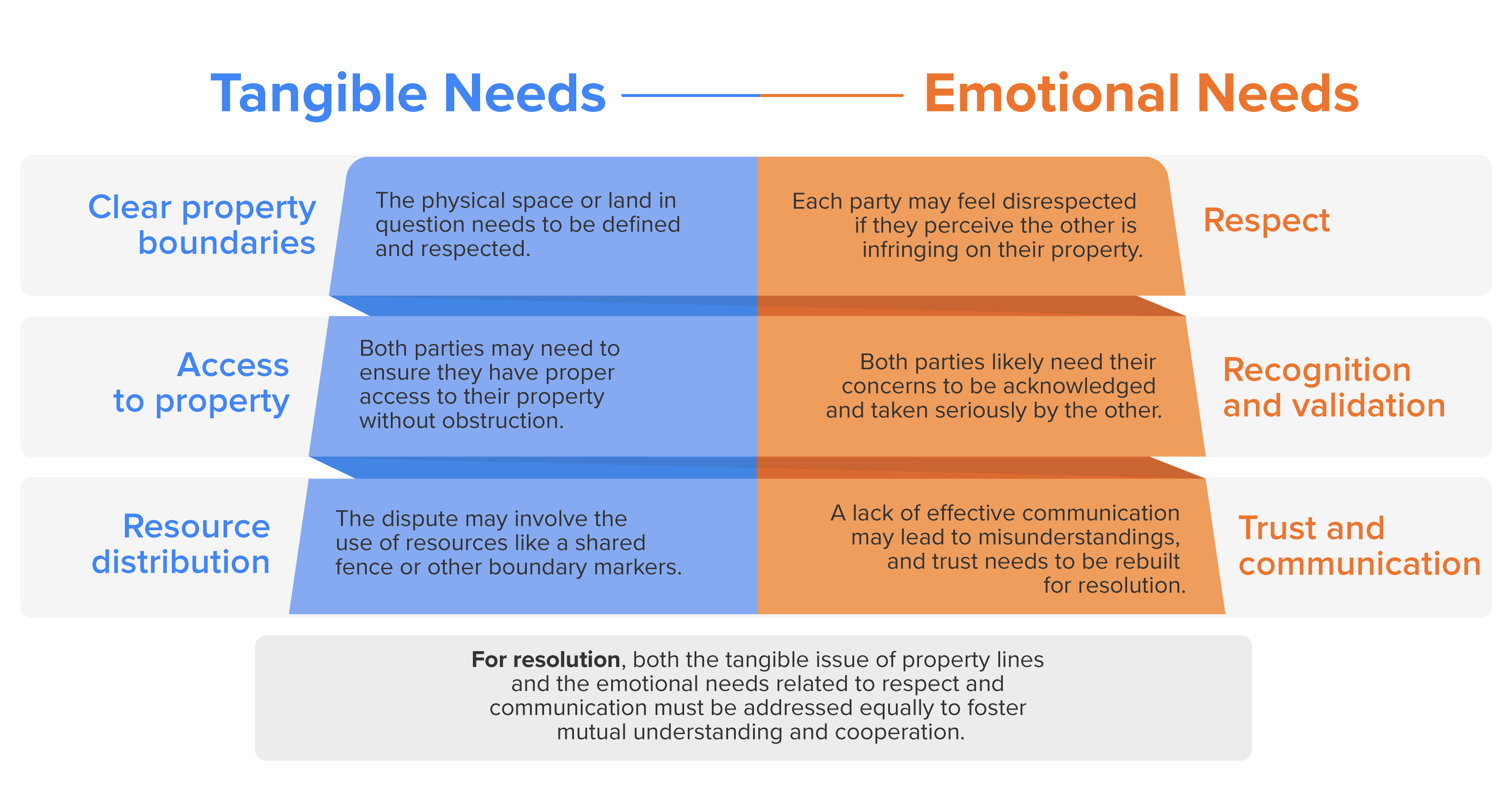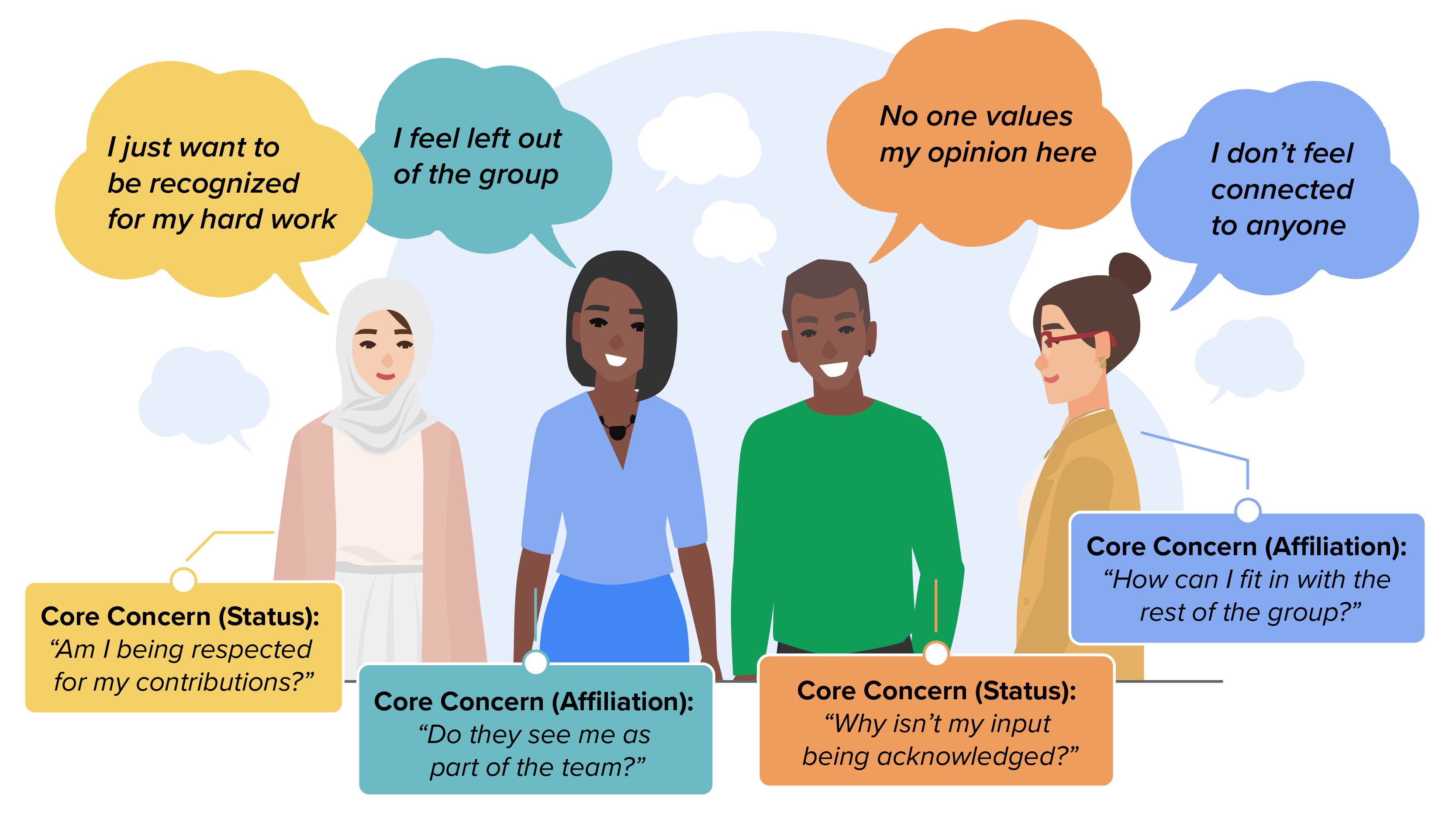Table of Contents |
When it comes to conflict resolution, we must understand the different types of needs that drive human behavior. Two terms often used in this context are “underlying needs” and “core needs.” In the last lesson, we learned about underlying needs, the basic, often unspoken, and sometimes unconscious desires and requirements that individuals or groups seek to fulfill. These needs are the deeper motivations behind the positions and demands that people express during a conflict. While they may seem similar, they are two distinct concepts.
Underlying needs are hidden motivators that are not always immediately apparent. They act as the root causes of individuals’ actions and stances in a conflict. They are diverse in nature, encompassing a wide range of factors such as security, respect, recognition, love, autonomy, and belonging. Additionally, these needs are context dependent, varying significantly based on the specific situation and circumstances of the conflict.
Core needs are fundamental emotional or relational needs that all humans feel within relationships or negotiations. These needs are often categorized within frameworks like Maslow’s hierarchy of needs, which outlines universal human needs in a hierarchical order.
Core needs are universal and fundamental to all humans, essential for emotional and psychological well-being. According to Maslow, these needs follow a hierarchical structure, beginning with basic physiological requirements and ascending to the highest level of self-actualization. They primarily focus on emotional and relational aspects, including esteem, love, belonging, and autonomy. People move up and down Maslow’s hierarchy based on their current situation and needs. For example, job loss or natural disasters can push individuals down to focus on basic needs, impacting their behavior and interactions. Understanding Maslow’s hierarchy—a psychological theory that organizes human needs into a five-level pyramid, with basic physiological needs at the bottom and self-actualization at the top, suggesting that lower-level needs must be met before higher-level needs can be pursued—helps in comprehending what fuels particular conflicts and the needs driving them.

| Aspect | Underlying and Core Needs |
|---|---|
| Scope and focus |
|
| Visibility and awareness |
|
| Resolution strategy |
|
In practice, effective conflict resolution involves addressing both underlying and core needs. By recognizing and fulfilling core needs, conflict resolvers can create a supportive environment where individuals feel secure and valued. This foundation allows for a deeper exploration of underlying needs, enabling a more comprehensive and sustainable resolution.
EXAMPLE
In a workplace conflict where an employee feels overworked and unrecognized, addressing the core need for esteem (recognition and respect) can create a positive environment. Once this core need is acknowledged, the conflict resolver can move on to the underlying need for support and better workload management, leading to a more detailed and effective resolution.Understanding the distinction and interplay between underlying and core needs provides a more holistic approach to conflict resolution, ensuring both immediate and fundamental human requirements are met. This holistic approach fosters lasting peace and cooperation, addressing both the surface-level issues and the deeper motivations behind conflicts.
Core needs play a big role in the development and escalation of conflicts. Recognizing and addressing these needs can lead to more effective and sustainable conflict resolution. Core needs can be divided into two main categories: tangible (physical) factors and intangible (emotional) factors.
Thinking back to the ABC model of conflict, we know conflicts often present themselves as disputes over observable or physical issues. However, underlying these conflicts are often deeper, less obvious emotional issues. Therefore, both tangible and emotional factors need to be considered when assessing a conflict.
Remember that a conflict is a perceived scarcity of resources. Tangible factors are external resources that can bring people into conflict. These include needs such as money, time, or physical space. For example, two business partners might be in conflict over financial issues, or a coworker dispute could arise over needed resources like research or data. Additionally, neighbors might argue about property lines or disturbances like a barking dog.
Intangible factors—emotional factors or internal feelings—often escalate conflicts that begin with tangible issues. These include relational and communication issues. For example, at work, a lack of responsiveness and communication can exacerbate resource disputes, or financial issues between business partners might worsen due to poor communication and relational dynamics.
Conflicts involving tangible factors can lead to emotional conflicts and vice versa. Effective conflict resolution requires acknowledging and addressing both types of factors. For example, in a neighborhood dispute, perceived disrespect and lack of communication can escalate physical conflicts over property lines. In this situation and in other conflict situations, both tangible and emotional factors must be acknowledged and given equal weight. Parties should have the chance to listen and be heard, fostering mutual understanding.

Core needs are the fundamental requirements that all humans have, which are essential for their emotional, psychological, and sometimes physical well-being. These needs are often universal, such as the need for safety, love, belonging, esteem, and self-actualization, as outlined in Maslow’s hierarchy of needs. In conflicts, these core needs can drive behavior and influence how individuals perceive and respond to situations.
Core concerns are specific emotional or relational needs that arise within the context of relationships or negotiations. They are more focused on aspects of core needs that directly affect how individuals feel valued, respected, and understood in interactions with others. In conflict resolution theory, core concerns typically include five key areas:
If appreciation, the perception of being heard, understood, and valued, is lacking, it can lead to conflicts in various contexts. For instance, at home, feeling unappreciated for household contributions can create tension and frustration. In the workplace, a lack of recognition for one’s efforts may foster resentment and decrease motivation. Similarly, in the community, not being consulted on actions that affect personal property can result in feelings of disregard and conflict with neighbors.
If autonomy, the perception of being empowered to make one’s own choices, is lacking, it can lead to conflict in various settings. For example, at work, feeling micromanaged or excluded from decision-making processes can cause frustration and resentment. At home, teenagers who seek trust and independence from their parents may rebel if they feel their autonomy is not respected. Similarly, in the community, residents may become dissatisfied, and conflict may arise if they are not involved in local decisions that affect their lives.
If affiliation, the need to feel emotionally connected to others, is unmet, it can lead to conflicts in various areas of life. For instance, in a family, a spouse who feels neglected due to a lack of quality time may experience emotional distance and tension. In neighborhoods or social groups, financial conflicts might arise from the pressure to fit in and keep up with others. Similarly, adolescents may engage in risky behaviors to gain peer approval, leading to conflicts both within the family and among friends.
If status, the perception of one’s rank or value in a given situation, is perceived to be lacking, it can lead to conflicts in various contexts. For example, feeling undervalued in a family or workplace setting can create feelings of resentment and frustration. In professional environments, conflicts may arise when individuals believe they are not being recognized or promoted appropriately, leading to dissatisfaction and tension within the team.
If role, the sense of owning responsibility and making meaningful contributions, is unclear or unrecognized, it can lead to conflicts in various situations. For example, feeling unrecognized or insignificant in professional or volunteer settings can cause frustration and disengagement. In a family context, children may seek age-appropriate roles in activities, and if their contributions are not acknowledged, it can lead to feelings of neglect or exclusion.
You may be wondering how core needs and concerns come together to help us solve conflict. Core needs and core concerns are closely related concepts that play a big role in the conflict process, and understanding their interplay can significantly enhance conflict resolution efforts.
Core concerns can be seen as specific expressions or manifestations of broader core needs in the context of relationships and social interactions.

EXAMPLE
The core need for esteem might be reflected in the core concerns of status and appreciation. Similarly, the need for belonging might be reflected in the concern for affiliation.Core concerns directly influence how conflicts develop and escalate. When core concerns like appreciation or autonomy are unmet, individuals may feel undervalued, disrespected, or powerless, leading to heightened emotions and potential conflict. Addressing these concerns can help de-escalate conflicts by ensuring that the emotional and relational needs of all parties are met.
In the conflict resolution process, addressing core concerns provides a practical way to meet core needs. By focusing on ensuring that each party feels appreciated, respected, autonomous, connected, and meaningful in their role, conflict resolvers can create an environment where deeper core needs are acknowledged and fulfilled. This approach helps build trust, fosters cooperation, and ultimately leads to more sustainable resolutions.
Effective conflict resolution strategies often involve identifying both core needs and core concerns. For instance, in a workplace conflict, recognizing an employee’s need for autonomy (a core concern) can address their broader need for esteem (a core need). By addressing both levels, conflict resolution becomes more comprehensive and effective.
Source: THIS TUTORIAL WAS AUTHORED BY MARLENE JOHNSON (2019) and STEPHANIE MENEFEE and TRACI CULL (2024). PLEASE SEE OUR TERMS OF USE.
REFERENCES
Maslow, A. H. (1943). A theory of human motivation. Psychological Review, 50 (4), 430–437.